The 9 best places to visit in Bolivia

Having scoured every corner of Bolivia over several months, here are my favourite places. If you could sum up Bolivia in one word, it would be "authentic." Whether you're talking about the smiling and welcome people, the multi-coloured markets, or the immense and wild countryside, it is a country to be seen and experienced.
Colonialists have left an undeniable mark on the architecture of Bolivian towns. However, the pre-Incan population has left a legacy. You can visit archaeological sites and museums to better understand the periods which shaped the country and its population of Quechuas, Aymaras and Métis.
Long before any human activity, the landscape was formed, and what a landscape! The infinite, immaculate white salt flats of Salar de Uyuni, the unassailable heights of the Cordillera Real, the abundant Lake Titicaca, the highest lake in the world and the wild Amazonian Jungle all contribute to the beauty of the country
Today the country is being divided between development and traditional ways of life. Now is the time to discover this country, its history, culture and places. Stroll through La Paz, Sucre and Potosi sampling fresh fruit juice or flavoursome potato soups accompanied with a glass of wine. Bolivia is a trip of a lifetime.
Tourist attractions
Our selection of must-see places
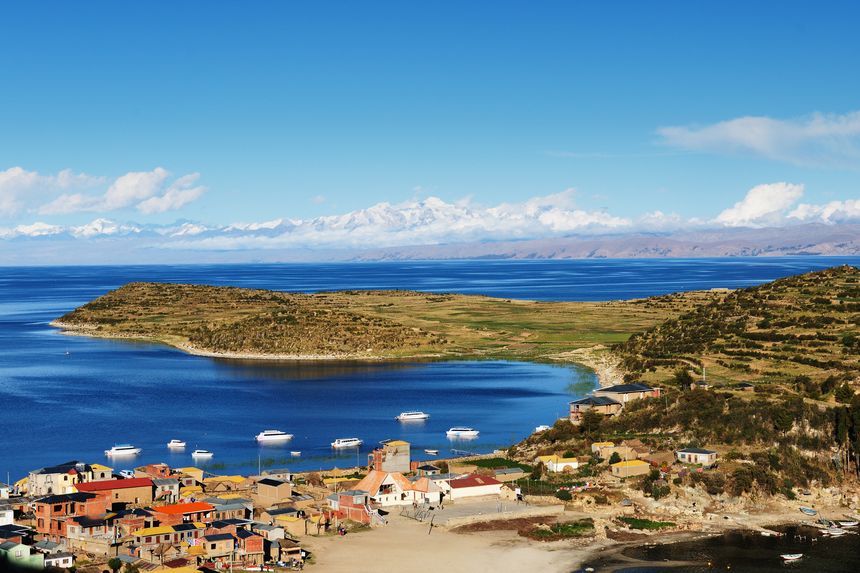

Lake Titicaca
Straddling Peru and Bolivia, Lake Titicaca is the largest lake in South America, and the largest navigable lake in the world. At 3,800 metres altitude, it is made up of islands and terraced fields on its banks.
The largest island is Isla del Sol which can be reached by boat from Copacabana. Thought to be the cradle of Andean civilisation, the sunsets and the pace of life will make you want to stay.
Lake | Island | Nature Wonders | Archaeological sites | Relaxation
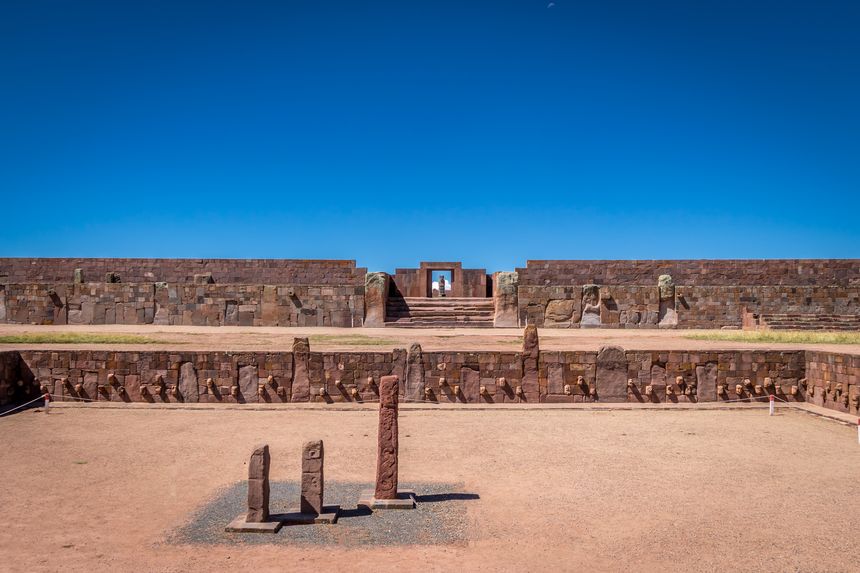

Tiwanaku
Between La Paz and Lake Titicaca is Tiwanaku, an archaeological site dating back over 3,500 years. Tiwanaku was at the epicentre of of pre-Columbian civilisation on the Andean Altiplano.
Admire the d’Akapana Pyramid,the Kalasasaya Temple and a large number of statues, gates and monoliths. The site has been looted many times by colonialists and the locals, but it retains its character. You can feel a strange sensation here, linked to the mysterious disappearance of this civilisation.
Architecture | Art & Culture | Archaeological site | Heritage
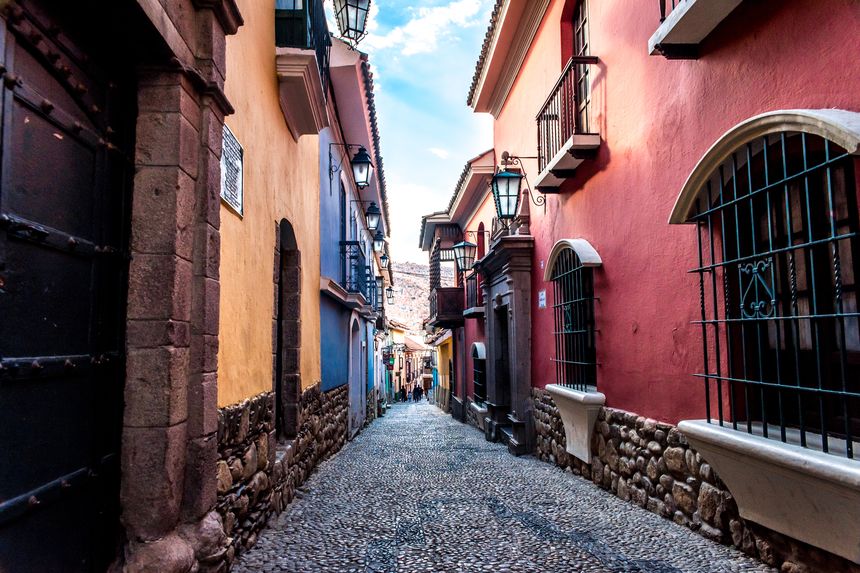

La Paz
La Paz is a history laden city in an improbable location, located at 4,400 metres altitude, in a basin surrounded by the Altiplano. It extends across all the surrounding hills as far as the eye can see.
At first glance, the city seems disorderly and chaotic, but you will discover the history of Bolivia here and fall under the spell of its charming backstreets, and the Bolivian girls in traditional dress, always ready to sell you trinkets.
Architecture | Craftsmanship | Market | Museums | Heritage
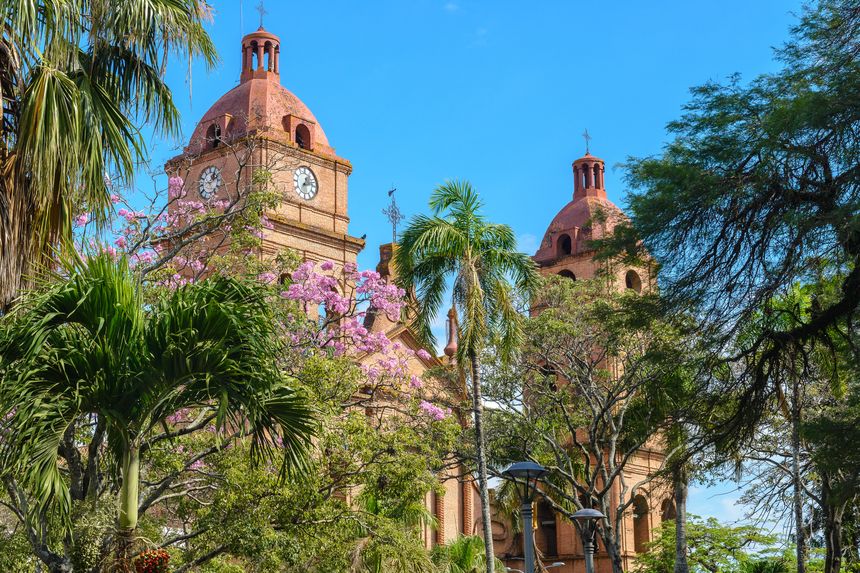

Santa Cruz and the Jesuit missions
Santa Cruz is considerably different from other Bolivian towns. This is a prosperous and tropical area. Agriculture has seen huge development in recent years which has driven population growth. However, the town has not lost its charm.
Here you can tour the Jesuit missions and discover their distinctive architecture. Classified as UNESCO world heritage sites, they offer a glimpse of Jesuit and Chiquitano culture.
Architecture | Hiking | Nature | Animals observation | Archaeological site
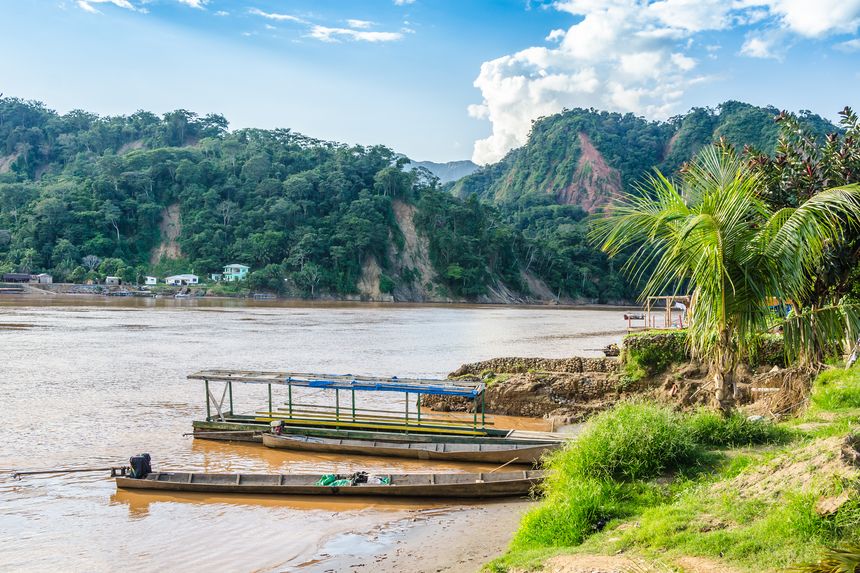

The Amazon
The Amazon is shared between 9 countries including Bolivia. The forest is full of wildlife and luxuriant flora. Not to mention the rich indigenous culture, traditions and languages of the region.
The starting point for your exploration is the small village of Rurrenabaque. You set out in a dugout to slowly sink into the heart of the jungle. During your trip you will have the opportunity to see monkeys, crocodiles, tortoises, eagles, anacondas, piranhas and other unusual creatures.
Animals | Nature | Fauna observation | River | Safari
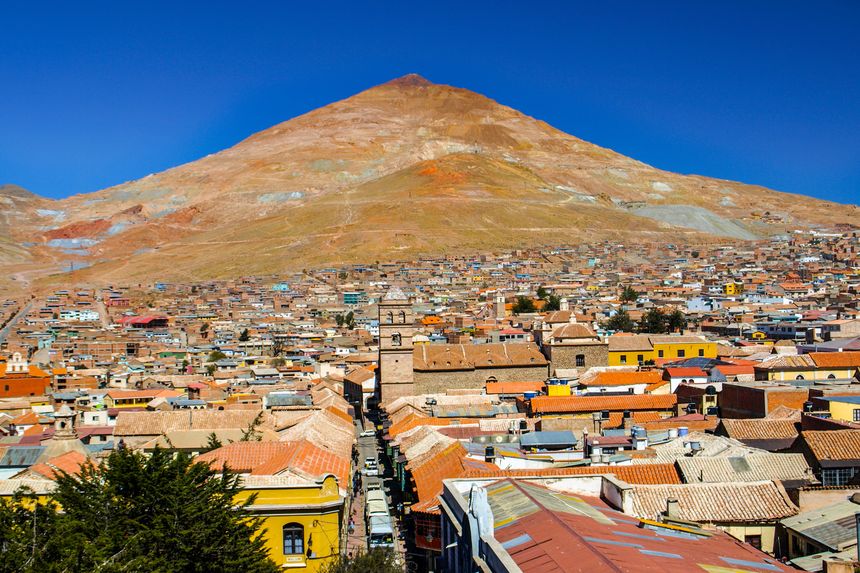

Potosi
A UNESCO world heritage site, the city houses some of the most beautiful colonial architecture in Latin America, such as the Casa de la Moneda. The town is perched at 3,900 metres at the foot of Mount Cerro Rico, a mountain which provided the Spanish colonialists with immense quantities of silver. It is the largest silver mine of all time, and although it virtually exhausted today, it is still under the protection of its guardian, the demon El Tio.
Art & Culture | Architecture | Market | UNESCO World Heritage
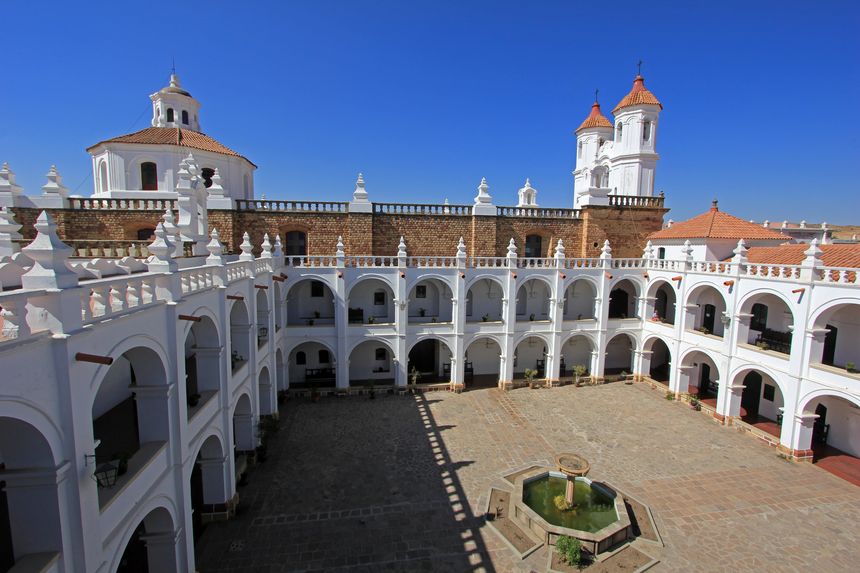

Sucre
Sucre is a typically colonial city which has been classified as a UNESCO world heritage site. You will be charmed by its dazzling white walls, the market and the church in the central square.
The town is also important historically. The great struggle for independance began here and it was in this town the Bolivian act of independance was signed. A visit to La Casa de la Libertad is a must in Sucre. Not only is the building magnificent, you can also discover the history of Bolivia there.
Art & Culture | Architecture | Market | UNESCO World Heritage
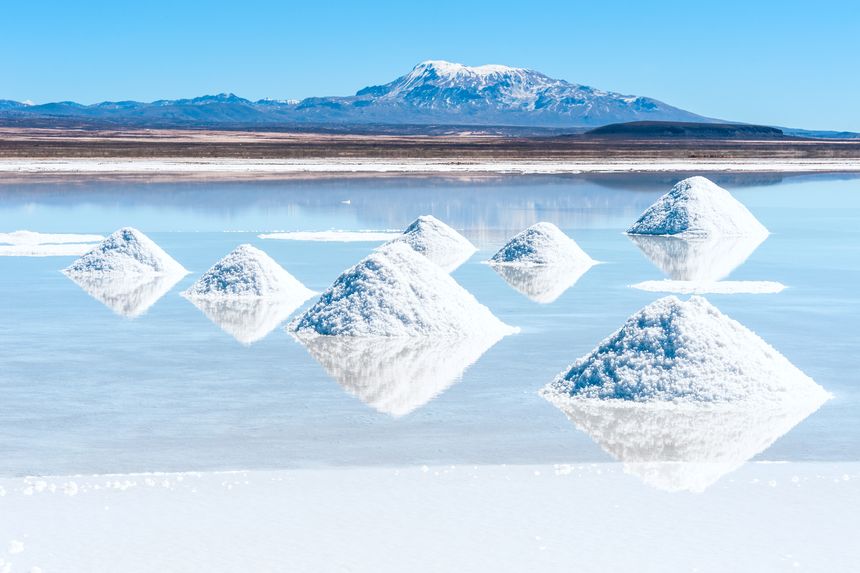

Salar de Uyuni
Salar de Uyani is one of the largest and most spectacular salt flats in the world. At 3,670 metres above sea level, it extends over 6,00 square miles. That's particularly impressive when you consider it is also between 40 and 120 metres deep. It's an incredible experience to hear the salt crack underfoot in this dazzling white landscape.
In the middle of Salar, you can explore Isla Incahuasi. it's an oasis in the middle of the salt flats with its own unique ecosystem. Here, you can find algae and fossils, as well as a large number of cacti, some a hundred years old and 10 metres tall, which cover the Isla.
Natural Wonders | Nature | Viewpoint
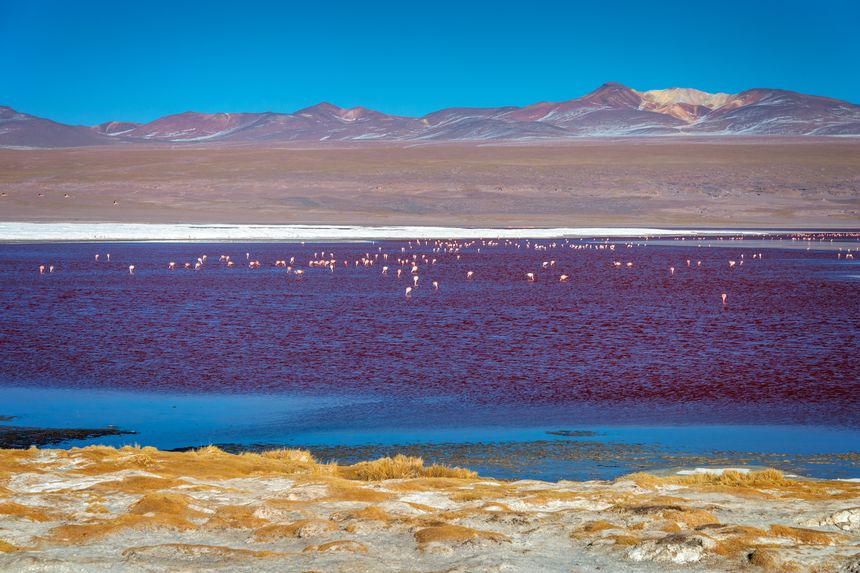

Sur Lipez
Sur Lipez is a unique, volcanic region at high altitude. Close to Salar de Uyuni, you can combine a visit to both places. There are canyons to discover, thermal waters of 30°C and more, and the Laguna Blanca, Laguna Verde and Laguna Colorada - enchanting lakes all set in this volcanic landscape. Flocks of pink flamingoes provide an additional flourish. With a bit of luck, you might even find yourself among a herd of wild llamas.
Natural wonders | Lake | Nature | Wildlife observation | Volcano

Travel advisor, Bolivia expert
Rozenn's review
Having travelled the length and breadth of Bolivia, I stopped for a while in Santa Cruz and then La Paz The pace of life here is different and makes you forget time. La Paz is teeming and noisy. Santa Cruz is relaxing and calm
This country will take you out of your comfort zone. The infrastructure is not always well developed, but if the Bolivians can manage, there's no reason you can't. Don't worry if you're stuck on a bus with a flat tire for several hours. You'll soon learn that in Bolivia "No hay problema!" - It's no problem.
If I can give you one piece of advice, don't pass up a trip to Salar de Uyuni
in a 4x4, combined with a tour of the Sur Lipez region. It is unique - you won't regret it for a moment. Similarly, take a dugout from Rurrenabaque for three days to see monkeys, black caiman, anacondas, and sloths if you're lucky.
On the other hand, I would have gladly missed the trip to Isla Uros on Lake Titicaca - it's too touristic with little of interest, in my opinion. Choose Isla del Sol instead, a haven of peace
You can't be disappointed by this country. You can play sports, climb volcanoes and go white water rafting. But you can also visit museums and discover the rich and varied culture which includes pre-Incan civilisations, particularly in Tiwanaku.
Let this country carry you away. I fell in love with Bolivia and its people. You will not be unmoved.
You may also like
-
Flights to Bolivia
All you need to know before buying your plane ticket
-
Tourist maps
Region, attractions and distance map Bolivia!
-
Hotel or vacation rental?
Find your dream accommodation in Bolivia at the best price...
-
When to go?
Be sure to visit Bolivia at the best time of year!
and why not...
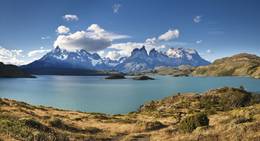 Chile
Chile




